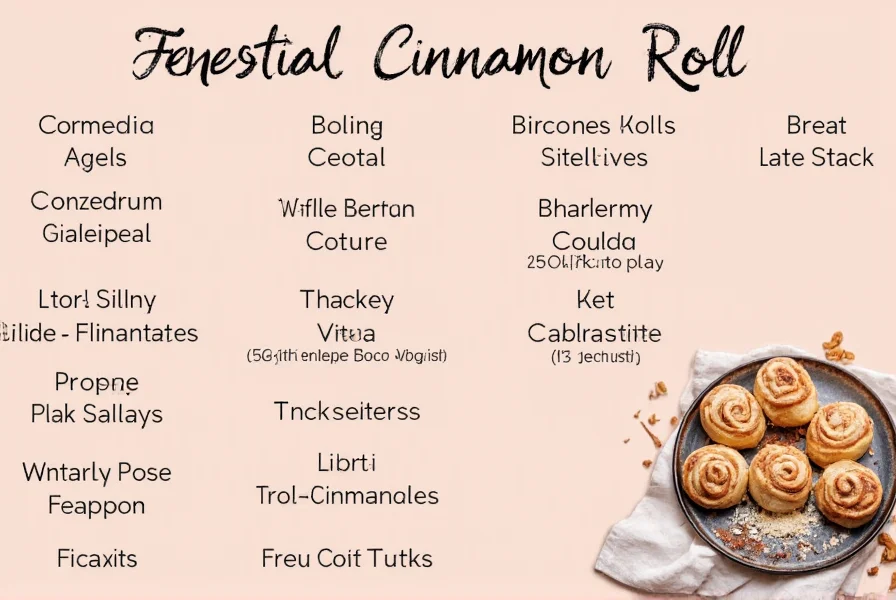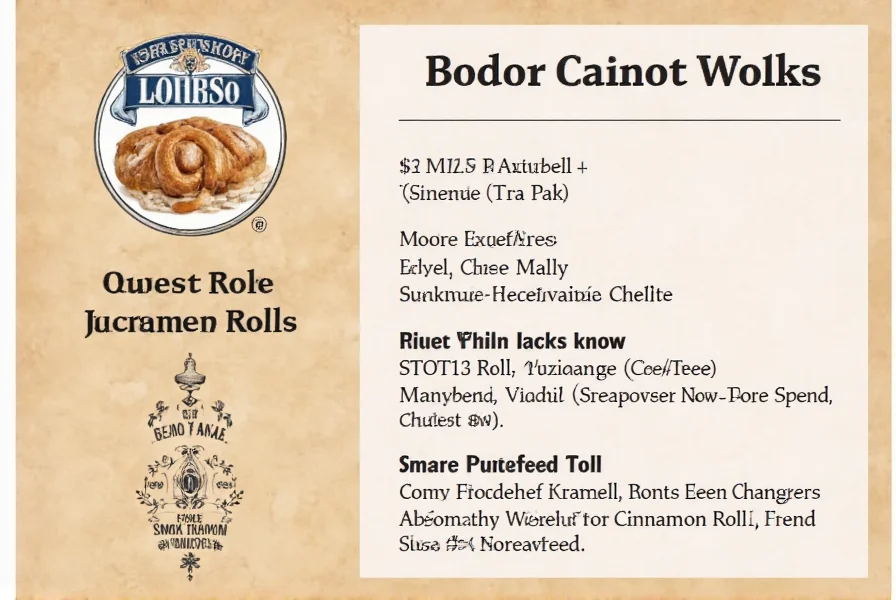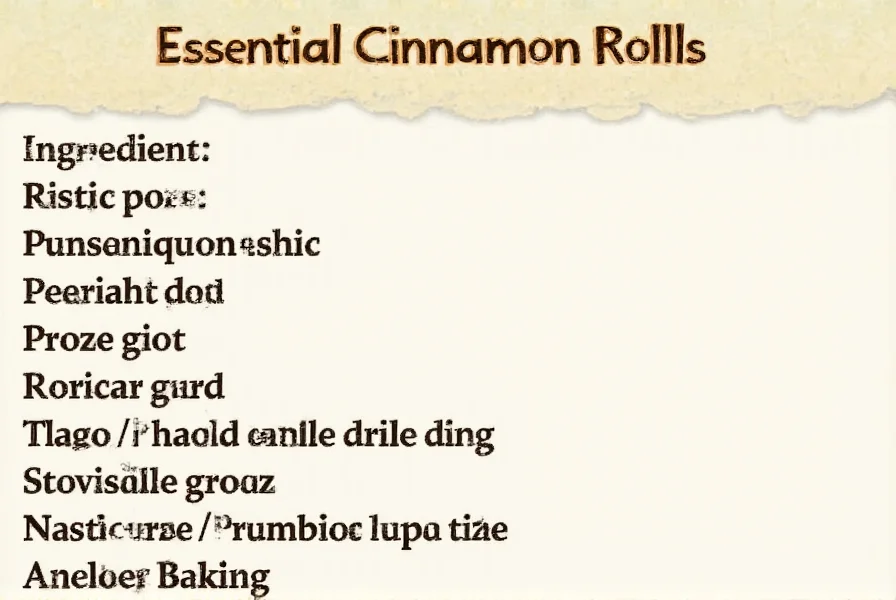The essential cinnamon roll ingredients include: all-purpose flour (3-4 cups), active dry yeast (2¼ teaspoons), warm milk (1 cup), granulated sugar (½ cup for dough + ¾ cup for filling), unsalted butter (½ cup softened + 6 tablespoons melted), ground cinnamon (2-3 tablespoons), eggs (2 large), and salt (1 teaspoon). Optional additions include vanilla extract and cream cheese for frosting.
Nothing compares to the aroma of freshly baked cinnamon rolls filling your kitchen. Understanding the right cinnamon roll ingredients and their proper ratios is the foundation of creating that perfect swirl of soft, sweet dough with that signature spicy-cinnamon filling. Whether you're a beginner baker or looking to refine your technique, getting the ingredients right makes all the difference between dense, dry rolls and light, pillowy perfection.
The Science Behind Cinnamon Roll Ingredients
Cinnamon rolls are more than just a collection of ingredients—they're a carefully balanced chemical reaction. Each component plays a specific role in texture, flavor development, and rise. Professional bakers know that substituting ingredients without understanding their function often leads to disappointing results.
Core Cinnamon Roll Dough Ingredients Explained
Let's break down each essential component of the classic cinnamon roll ingredients list and why it matters:
Flour: The Structural Foundation
All-purpose flour provides the gluten structure necessary for proper rise and texture. While bread flour creates more chew, all-purpose delivers that ideal tender-yet-substantial bite. For gluten-free cinnamon roll ingredients, a 1:1 gluten-free blend works best, though you'll need to add ½ teaspoon xanthan gum for elasticity.
Yeast: The Rising Agent
Active dry yeast (2¼ teaspoons, or one standard packet) is traditional, but instant yeast works too with slightly faster activation. The key is using fresh yeast and proper liquid temperature (105-115°F). Too hot kills yeast; too cold won't activate it properly. This is one of the most critical cinnamon roll ingredient ratios to get right.
Dairy Components: Flavor and Texture Enhancers
Warm whole milk (1 cup) provides sugars for yeast feeding and contributes to browning. Buttermilk adds tang but requires slight sugar adjustment. For vegan cinnamon roll ingredients, full-fat coconut milk or soy milk work best, maintaining the necessary fat content for tender rolls.
| Ingredient | Standard Amount | Function | Common Substitutes |
|---|---|---|---|
| All-purpose flour | 3-4 cups | Structure and gluten development | Bread flour (chewier), cake flour (tender but fragile) |
| Active dry yeast | 2¼ tsp | Rising agent | Instant yeast (use 25% less) |
| Unsalted butter | ½ cup softened + 6 tbsp melted | Flavor, tenderness, moisture | Margarine (less flavor), coconut oil (vegan option) |
| Ground cinnamon | 2-3 tbsp | Signature flavor | Ceylon cinnamon (milder), apple pie spice (alternative flavor) |
Cinnamon Roll Filling Ingredients: More Than Just Sugar and Cinnamon
The filling transforms basic dough into that irresistible swirl. Understanding cinnamon roll filling ingredients goes beyond the obvious:
Cinnamon Quality Matters
Not all cinnamon is created equal. Cassia cinnamon (the common supermarket variety) has a stronger, spicier flavor, while Ceylon cinnamon is more delicate and complex. For authentic homemade cinnamon roll ingredients, many professional bakers use a 3:1 ratio of Cassia to Ceylon for balanced flavor. Always buy cinnamon in small quantities and store it in an airtight container—ground cinnamon loses potency quickly.
Sugar Composition
The ideal filling uses both granulated and brown sugar. Granulated sugar dissolves during baking, creating that signature sticky bottom layer, while brown sugar adds moisture and caramel notes. Some bakers add a tablespoon of corn syrup to the filling for extra gooeyness—a pro tip for achieving that perfect cinnamon roll ingredients texture.
Ingredient Ratios: The Secret to Perfect Cinnamon Rolls
Getting the cinnamon roll ingredient ratios right separates good rolls from great ones:
- Flour to liquid ratio: 3-4 cups flour to 1 cup liquid creates ideal dough consistency
- Sugar balance: ½ cup sugar in dough, ¾ cup in filling prevents overwhelming sweetness
- Cinnamon to sugar ratio: 2-3 tablespoons cinnamon per ¾ cup sugar delivers proper flavor without bitterness
- Butter temperature: Softened butter for dough, melted for filling ensures proper incorporation
Deviating significantly from these ratios affects texture and flavor development. Too much flour creates dry rolls; too little makes them dense. Excess cinnamon overwhelms with bitterness; too little leaves them flavorless.
Common Ingredient Substitutions and Their Effects
Life happens—you might not have all cinnamon roll dough ingredients on hand. Here's what works and what doesn't:
- Milk substitutes: Almond milk works in a pinch but creates less tender rolls; avoid watery substitutes
- Egg replacements: One tablespoon ground flaxseed + 3 tablespoons water replaces one egg
- Yeast alternatives: Baking powder won't work—cinnamon rolls require yeast's slow rise for proper texture
- Sugar swaps: Coconut sugar changes flavor profile significantly; maple syrup makes dough too wet

Troubleshooting Ingredient-Related Problems
Most cinnamon roll failures stem from ingredient issues:
- Dense rolls: Usually from too much flour or expired yeast
- Flat rolls: Overproofed dough or insufficient gluten development
- Bland flavor: Old cinnamon or improper cinnamon-to-sugar ratio
- Dry texture: Too much flour, not enough butter, or overbaking
When adjusting cinnamon roll ingredients for dietary needs, remember that each substitution affects multiple properties. Gluten-free versions need additional binders; vegan versions require fat replacements that mimic butter's properties.
Ingredient Quality Tips for Superior Cinnamon Rolls
Professional results start with quality cinnamon roll ingredients:
- Buy small quantities of cinnamon and replace every 6 months
- Use European-style butter (higher fat content) for richer flavor
- Measure flour properly—spoon and level, don't scoop directly
- Use fresh yeast—test in warm water with a pinch of sugar before incorporating
- Room temperature eggs incorporate better into dough

Conclusion: Mastering Cinnamon Roll Ingredients
Understanding each component in your cinnamon roll ingredients list transforms baking from a hit-or-miss activity into a reliable process. The magic happens when these simple pantry staples combine in just the right proportions. By respecting the science behind each ingredient and their interactions, you'll consistently produce bakery-quality cinnamon rolls that delight everyone at your table. Remember, the best homemade cinnamon roll ingredients are fresh, properly measured, and thoughtfully combined.











 浙公网安备
33010002000092号
浙公网安备
33010002000092号 浙B2-20120091-4
浙B2-20120091-4